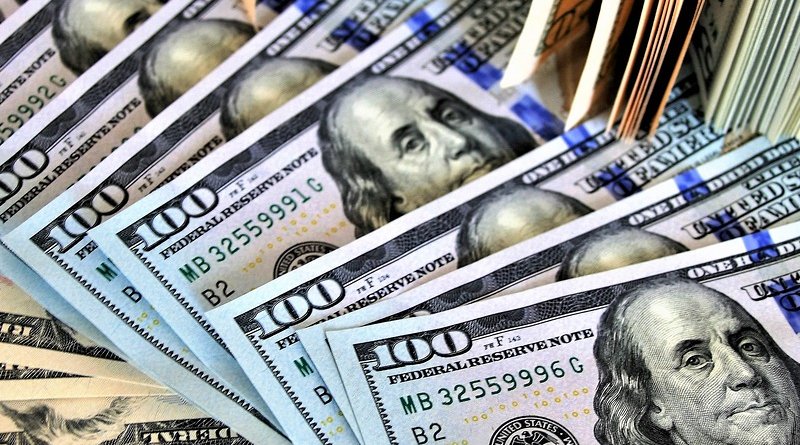Why US Interest Rate Decision Matters Across The Globe – OpEd
By Arab News
By Cornelia Meyer*
The US central bank, the Federal Reserve (Fed), is widely expected to lower its base rate on Wednesday. Its governor, Jerome Powell, announced the about-turn of his tightening policy in a speech in Paris in mid-July.
In the dispute between the Fed and President Donald Trump, who has argued for some time that he would like to see the Fed lowering interest rates, Powell had hitherto argued that he was bound by indicators of the economy, which is performing better than its counterparts in the G7. In Paris, Powell elaborated that he also had to take into account forecasts of what would happen if the Fed did not lower the rate from its current 2.5 percent. It is true that US gross domestic product growth has slowed to 2.1 percent, inflation is at 1.6 percent, below the 2 percent target, and that the purchasing managers’ index fell to 50.0 in July — smack bang on the border between expansion and contraction. However, the economy is still growing and the unemployment rate is at 3.8 percent, still the lowest in decades. The nonfarm payroll statistic is expected to add another 100,000 new jobs on Friday. The consumer confidence index also has a positive outlook.
So what are we to make of the about-turn? For one, inflation is below the target, which is the most important indicator for the Fed. Both the Bank of Japan (BOJ) and the European Central Bank (ECB) have very low to negative interest rates. In June, ECB President Mario Draghi warned at the annual conference in Sintra, Portugal, to expect a return to expansionary monetary policy after BOJ Governor Haruhiko Kuroda had declared that there were still assets the BOJ could and would purchase. Both the BOJ and the ECB had put the world on a course of lower for longer as far as interest rates are concerned and bigger rather than smaller central bank balance sheets.
Looking at the anemic growth rates and below-target inflation in both the euro zone and in Japan, one could argue that these central bank policies did not have the desired effect. While the Fed is the world’s most important central bank, it does not operate in a vacuum. Some observers might have advocated a further tightening of monetary policy in the US, given that its economy is firing on all cylinders. However, it would be inconceivable to have the Fed base rate at, let us say, 3 percent while Japan and the euro zone verge on zero.
President Trump’s economic adviser told CNBC that the US was not engaged in a currency war and that lowering interest rates made good sense when looking at the economic forecasts.
As always, there will be winners and losers in this new lower for longer vote. Above-average US economic growth rates, comparatively higher interest rates and positive yields on low-risk treasuries made the US a prime destination for investors, at the expense of paper in other geographies. In particular, emerging market assets may benefit from lower US interest rates.
Natural safe havens like the Swiss franc will be affected too. The lower for longer interest rates will make it impossible for the Swiss National Bank to get itself out of the zero to negative interest rate zone. Even its 10-year bond’s yield turned negative as of last week.
The Gulf Cooperation Council central banks will keenly observe the Fed’s move. They have more or less mirrored US interest rates over the last two years, which makes sense given that their currencies other than the Kuwaiti dinar are pegged to the dollar.
The dollar has traditionally had an impact on the oil price, given that the commodity is traded in dollars. The traditional inverse correlation between dollar strength and oil price has, in recent times, been somewhat weakened as other fundamentals gained in influence, such as the policies of the OPEC/non-OPEC alliance.
The most important impact of the Fed’s decision and the lower-for-longer mantra of the ECB and the BOJ are asset bubbles. As returns of safe government paper yield little to nothing, capital flows into other assets, especially shares that pay steady dividends and have a reasonable credit rating. These have taken the position previously held by bonds in investment portfolios. The question is how long equities will act as the new bonds and if we are creating a bubble. The same holds true for other assets like, for instance, prime real estate. These questions matter for institutional investors like sovereign wealth funds or pension funds, just as much as they do for retail investors across the globe.
Markets have pretty much banked on a reduction of 25 basis points by the Fed, so nothing short of 50 would come as a surprise. Wednesday is definitely a day to watch.
• Cornelia Meyer is a business consultant, macro-economist and energy expert. Twitter: @MeyerResources

